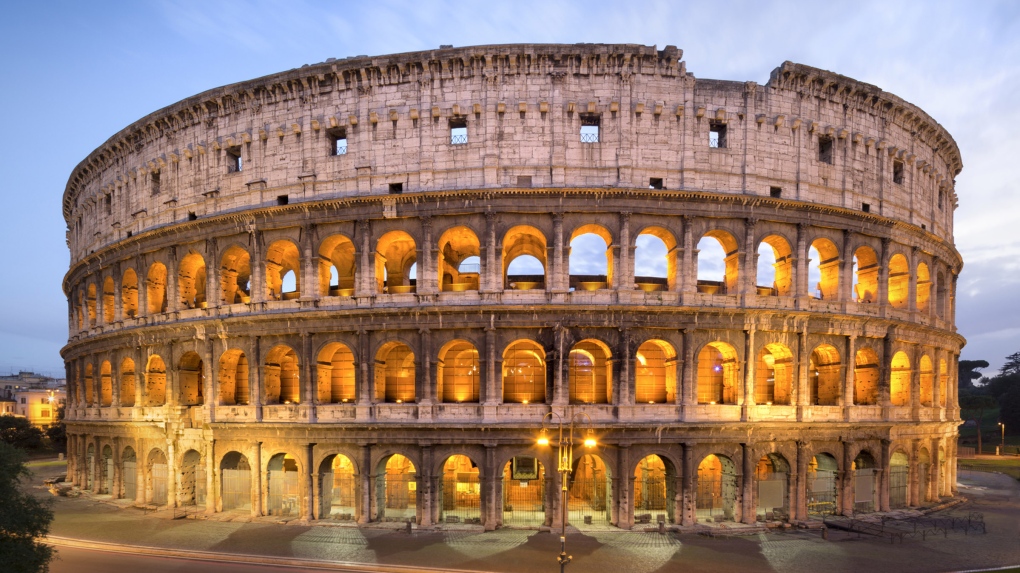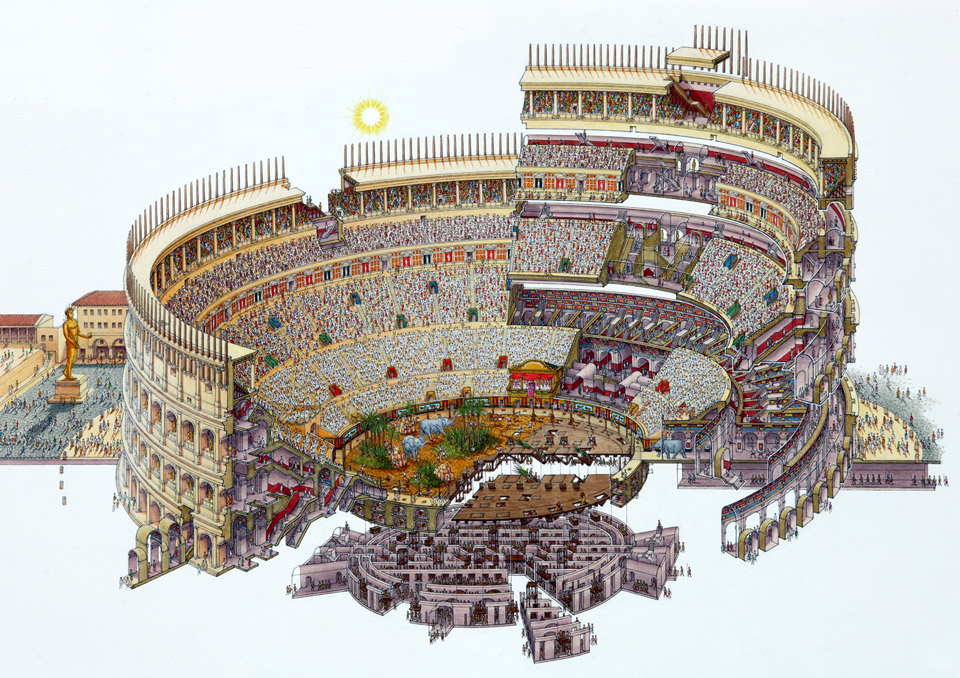For many travel enthusiasts, Italy is a dreamlike destination. This country offers everything to everyone. Italy has left its impact all over the world, whether in terms of culture and traditions, historic buildings, attractive landmarks or popular Italian cuisine. Every city in Italy has become remarkably popular, such as the capital Rome which is home to the Vatican, iconic landmark – Roman Colosseum and ancient ruins. Other cities such as Florence is the treasure of Renaissance art and architecture, Venice is regarded as the canal town and Milan is the symbol of fashion.
Among all the landmarks and destinations- The Colosseum of Rome pulled the attraction of many tourists and history buffs from every corner of the world every year.
Let’s explore its much about Roman Colosseum in our blog and know why its that much popular and learn about its history and some other interesting facts.
Roman Colosseum
The Roman Colosseum was one of the greatest monument in the ancient history of Rome. There’s nothing that represents ancient Rome just like the Colosseum does. This iconic piece was constructed between 70 CE and 80 CE, and it was the largest amphitheatre ever constructed in Italian culture. Initially, at the time of its construction, it was known as as the Flavian Amphitheater in memory of the first Flavian emperor.

Later the Colosseum made a name for itself and is now recognized as the New Seven Wonders of the World. The Colosseum is an oval-shaped amphitheatre that is capable of handling over 50000 viewers jointly. Earlier, Gladiator combats, Cultural celebrations and dramas execution were well known in Colosseum. But later this Roman Colosseum was destroyed by earthquakes, robbery and other anti-social elements.
History of Roman Colosseum
In 64 AD, the Great Fire of Rome destroyed the Eternal City. It happened during the rule of Nero, who appropriated the land and built a luxury palace with a lake and gardens, which we all know as Domus Aurea (Golden House). The Colosseum or Flavian Amphitheatre is a large ellipsoid arena constructed in the first century CE. The Colosseum was built around A.D. 70-72 A gift to the Roman people by Emperor Vespasian of the Flavian dynasty. Afterwards, on A.D. 80, Vespasian son Titus opened this huge building for 100 days of gladiatorial games and wild animal battle. The Colosseum was known at that period as the Flavian Amphitheater. It has been used continuously for four centuries but the stadium became a source of construction materials in the 18th century. Thus two-thirds of the original construction was destroyed over time, but the amphitheatre remains one of the world’s most famous tourist destinations and an iconic symbol of Rome.
Also Read: Machu Picchu – Most Fascinating Ancient Site of Peru
Construction Story of Roman Colosseum
After a victory in fighting Emperor Vespasian began building on the Roman stadium. The money to build the Colosseum came from selling the treasure that the soldiers had taken from the defeated enemies of Jerusalem. It was 188 meters long and 156 meters wide after the completion of the amphitheatre, which is as high as a 12-story building.

The building was part of a larger project initiated by Emperor Vespasian to restore Rome to its former glory before the turmoil of the civil war. As Vespasian declared with the inscription Roma resurgence on his coins, the new buildings: the Temple of Goodwill, the Claudius Shrine and the Colosseum.
Other Architectural Detail
The theatre was magnificent even from the exterior, with massive open arcades on each of the first three floors featuring statue-filled staircases. The first floor had Doric columns, the second was Ionic and the third was Corinthian. The upper floor had Corinthian pediments and small rectangular windows.

The Colosseum ‘s exterior is made entirely of travertine stone and is high in four stories. The building has eighty carved entrances, allowing easy access for its spectators, including all classes of Roman society. The central area of the Colosseum, the arena, was covered with a large wooden floor and canvas to make it waterproof. There was a layer of sand over this which was used to trap moisture.
Today, visitors can relive the history of the Colosseum by touring the structure on your own or taking a guided tour of the building.
Some Interesting of Roman Colosseum
- As I stated above that Colosseum of Rome was constructed in between 72 A.D and 80 A.D under the support of Emperor Vespasian but do you know this sumptuous monument was erected with the manpower of tens of thousands of labourers.
- The Colosseum is the most extensive amphitheatre in the world and thus it can easily fit a modern-day football pitch inside it!
- The first games ever to be played were in 80 A.D., under Emperor Titus and they ran for 100 days straight. After that, the games continued to be conducted – gladiatorial games until the fifth century, and animal hunts until the sixth.

- The event at the Colosseum was severely barbaric though – about 10,000 animalswere killed in a single day during those games played by the emperors.
- To cover the audiences from Ancient Rome’s blistering sun and humidity, there was the velarium – a tent/canopy that could be pulled over the top of the seating area to provide shade.
- There were numerous rooms and underground passages below the Colosseum. Here is where the animals and gladiators were kept, waiting in the arena above to meet their fate. There were 36 special effects sliding doors in the stadium too!
Also Read: Italy- Architectural Epitome, Historical Eminence And The Vatican City!

